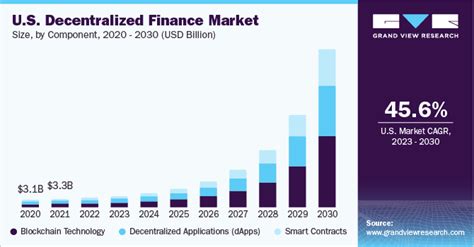The Future of Finance: Decentralized Stablecoins and Their Impact
As the world’s financial markets continue to evolve, a new wave of innovation is emerging that promises to revolutionize the way we think about money. One of the most exciting developments in this space is decentralized stablecoins, which are changing the game of finance as we know it.
What are decentralized stablecoins?
Decentralized stablecoins, also known as “stablecoins,” are digital assets that aim to maintain a stable value relative to traditional fiat currencies. Unlike traditional cryptocurrencies such as Bitcoin or Ethereum, these coins are not backed by a single entity, but rely on complex mathematical algorithms to maintain their stability.
The best-known example of a decentralized stablecoin is USDT (Tether USD), which was launched in 2014 as a digital counterpart to the US dollar. Tether’s algorithm ensures that its value remains pegged to the US dollar, making it a highly liquid and reliable store of value.
How do decentralized stablecoins work?

Decentralized stablecoins use advanced algorithms to track market prices and maintain their stability. These algorithms are typically based on mathematical formulas that take into account various economic indicators, such as interest rates, commodity prices, and currency exchange rates.
When a decentralized stablecoin is issued, it is backed by a fiat currency reserve or other asset that can be used to back the value of the coin. For example, Tether has a large reserve of US dollar-backed cash, which it uses to peg its value to the US dollar.
The Impact of Decentralized Stablecoins
Decentralized stablecoins have far-reaching implications for finance as we know it. Key benefits include:
- Increased Liquidity: Decentralized stablecoins provide a high level of liquidity, making it easier to buy and sell digital assets.
- Added Security: The decentralized nature of these coins means that there is no central entity that controls their value or issues new units.
- Increased Transparency: Blockchain technology allows for complete transparency and auditability of the coin’s operations and transactions.
- Reduced Counterparty Risk: Decentralized stablecoins eliminate the intermediary role of traditional financial institutions, thereby reducing counterparty risk.
The Future of Finance with Decentralized Stablecoins
As we move towards the digital age, decentralized stablecoins are playing a major role in shaping the future of finance. With their ability to provide liquidity, security, transparency, and reduced counterparty risk, these coins are becoming an essential part of the global financial world.
Challenges and Opportunities Ahead
While decentralized stablecoins offer many benefits, several challenges also need to be addressed:
- Regulatory Framework: Governments and regulators need to develop a clear framework for decentralized stablecoins, including standards for security, stability, and liquidity.
- Scalability: As the number of users increases, decentralized stablecoins may face scalability issues that require solutions, such as sharding or other techniques to maintain performance.
- Adoption: Widespread adoption will require educational and awareness campaigns to promote the benefits and risks associated with the coins.
Despite these challenges, decentralized stablecoins offer tremendous opportunities for innovation and growth. As we move forward into the new era of digital finance, it is clear that decentralized stablecoins will play an important role in shaping the future of money.
Conclusion
The future of finance looks increasingly decentralized and innovative, with decentralized stablecoins at its center.
Leave a Reply